TechRadar Verdict
Senua's Saga: Hellblade 2 is a bleak yet deeply absorbing game - and one I’ve not played anything like before. Combat is a little simplistic, and some parts are pedestrian, but the remarkable visual and audio design, performances and acting, the intriguing narrative throughout, and a beguiling world that has one of the strongest senses of place I’ve experienced elevate the game wonderfully.
Pros
- +
Superb acting and voice performance
- +
Rich, mysterious, and atmospheric setting
- +
Incredible design from audio to beautiful landscapes
- +
Gripping narrative throughout
- +
Embraces harrowing themes with confidence
Cons
- -
Repetitive, limited combat
- -
Very slow and empty at times
Why you can trust TechRadar
Platform reviewed: Xbox Series X
Available on: Xbox Series X|S, PC
Release date: May 21, 2024
Senua's Saga: Hellblade 2 is a narrative-driven action game almost like no other. Developer Ninja Theory’s sequel to the 2017 game Hellblade: Senua’s Sacrifice delivers a harrowing, bleak, and heavy experience that will live long in the memory.
Subtle and unobtrusive traversal, exploration, and combat mechanics collide with world-beating audio-visual design, out-of-this-world motion capture, and stellar character performances to bring a captivating adventure across Iceland in an unmissable tale.
While Senua’s journey in Senua’s Saga: Hellblade 2 starts in relative simplicity - to confront slave traders and end the theft of her fellow Orkney people by Icelandic raiders - it soon becomes something much deeper and darker as she crosses a clutch of distinct and rugged Icelandic landscapes that are rich in a thick sense of place and atmosphere.
Some parts of that journey are overly slow and empty, and combat does get repetitive, but this sequel improves greatly on all that came before it in the first game. Senua’s experience and endurance of the world, her enemies, and herself is an intensely gripping one.

Norse code
This intensity is tangible from the beginning with Senua’s mental condition and voices in her head (The Furies) providing a constant soundtrack. Ever present in every step of her thought process, they immediately help to remind us of Senua’s mental state, but this time looking more outward than inward, informing how Senua sees the world.
Bringing this to life is breathtaking voice acting and performance capture, spearheaded once again by a stunning performance from Melina Juergens. Such is the conviction, grit, and intensity of Juergens’ portrayal of Senua, that it often feels like you’re channeling what Senua feels. The binaural audio design once again works video game magic to disorient, trick, and immerse you further into a unique cerebral experience.
From battling deep fear, guilt, and self-loathing, to concepts of sacrifice, a weight of responsibility to others, and the struggle to balance all these and keep pushing through the darkness toward the light, this is a character performance for the ages.
The supporting cast is an excellent addition too. A clutch of allies and companions join Senua across parts of her journey, offering insight, friendship, worldbuilding, and background. They are all voiced and portrayed excellently, and help to bring the journey and world to life with acute humanity and realism.
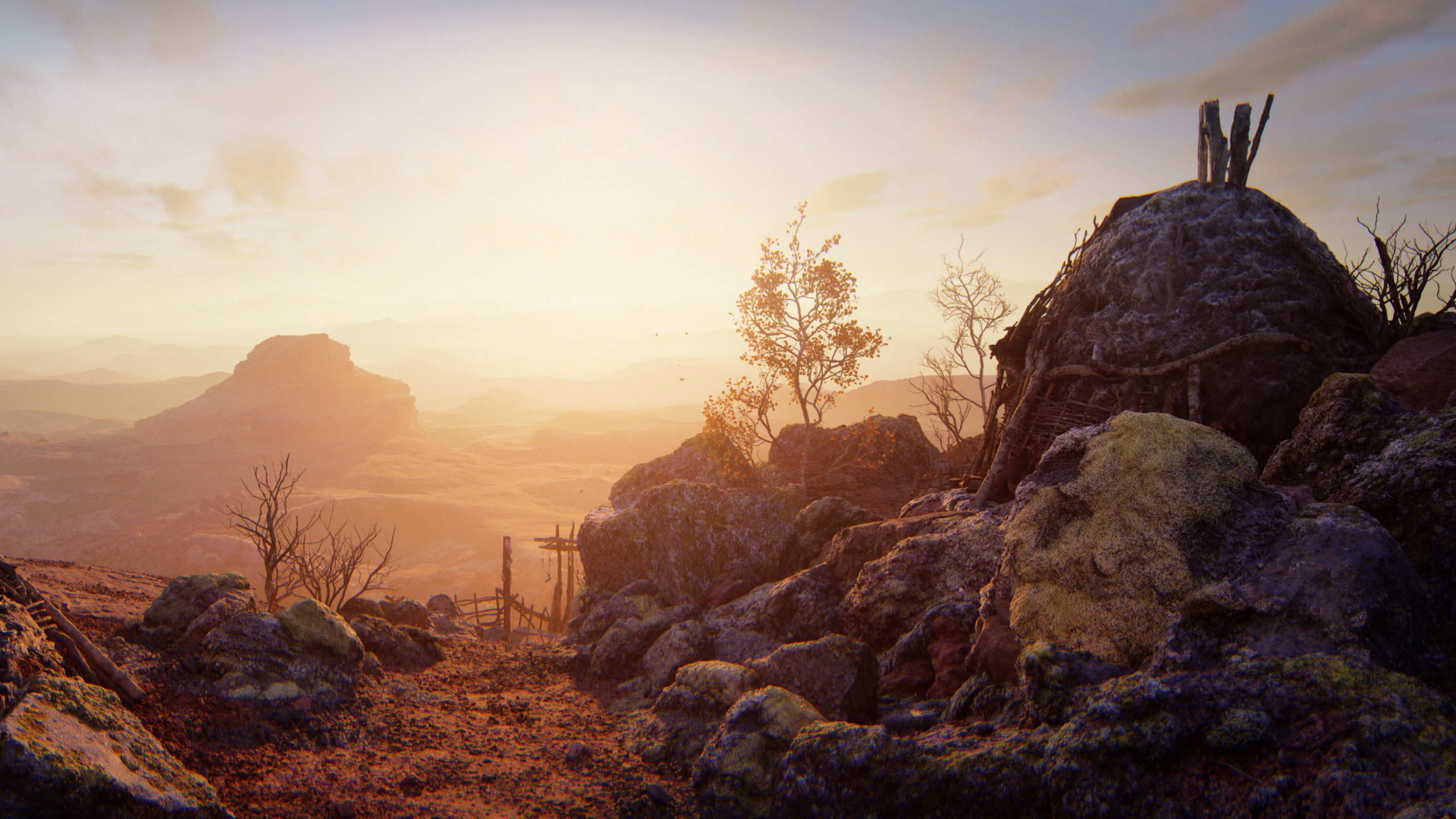
Barren but beautiful
One of the other stars brought to life with intense realism and accuracy in Senua’s Saga: Hellblade 2 is the world and its spectacular environments. The landscape of Iceland has been rebuilt with such care and accuracy that you, and Senua, can almost feel the fury of the volcanoes and the tranquility of the ocean that formed it.
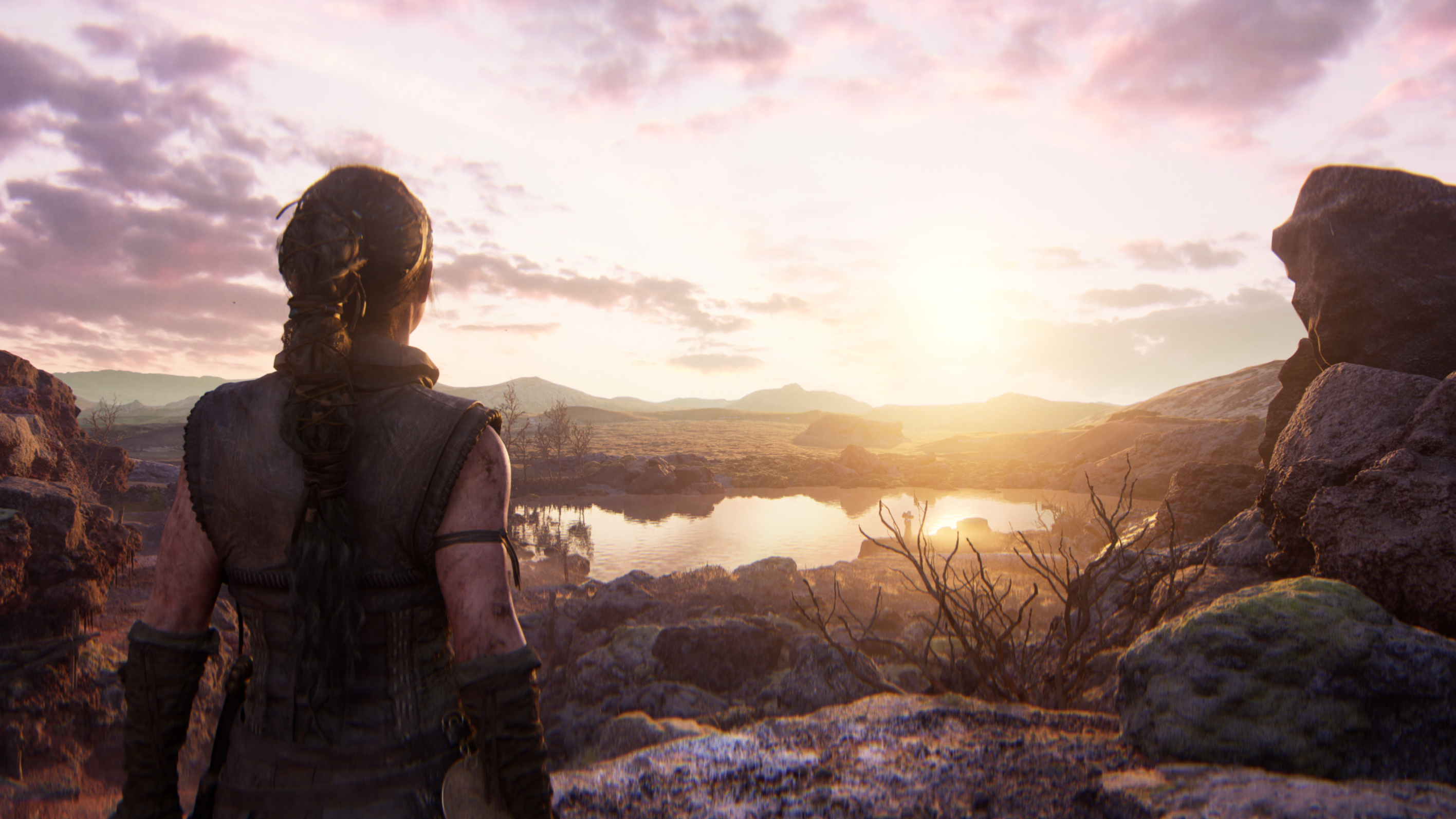
It’s one of the most atmospheric game worlds I’ve ever experienced, and one of the best-looking Xbox Series X games to date. The sense of place it has is so rich in every location: from the most isolated, destroyed fishing shack on a stormy cliff edge, to the deepest darkest caves subtly lit with flickers of Senua’s torch, and from gloomy mysterious misty forests to desolate barren Icelandic landscapes, each location is beautiful and vividly brought to life. In every location this sense of place is heightened by other design elements; the score, the audio design, performances, voices, the weather, and lighting - it all comes together in moments across the landscapes and environments in such a powerful way.
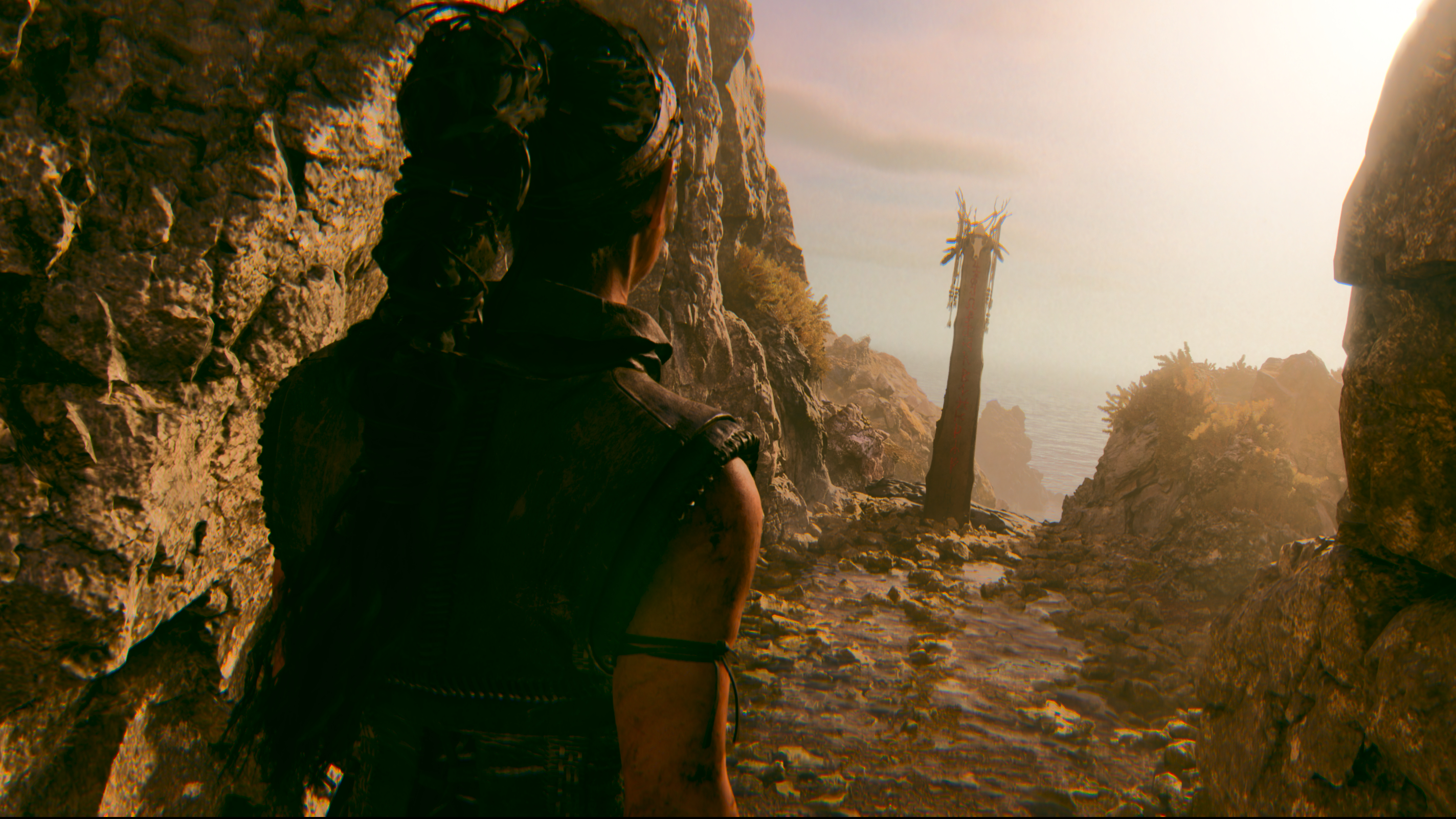
I found the smaller stories that are presented to Senua are some of the most captivating bits of narrative and lore in the game. Shown through ethereal visions and use of lighting, they are voiced superbly and poetically tell tales of tragedy or despair that perfectly complement the main story.
As a result, the world demands to be appreciated and soaked up, which complements the slower-paced parts of the game. I always found myself peering into every nook and cranny, searching rock formations for secrets, taking in views (and screenshots) through trees and over cliff edges, and rounding every corner to find one of the game’s lore stones to pull me deeper into the world.
Dotted throughout the larger areas of the environments are puzzles that expand on the first game and offer a greater range of interactions with the world. While some are similar to the first game’s - finding rune symbols in the landscape to open doors, for example - and none are particularly taxing, there are some reality-bending, world-altering puzzles that are exquisitely executed and satisfying to solve.
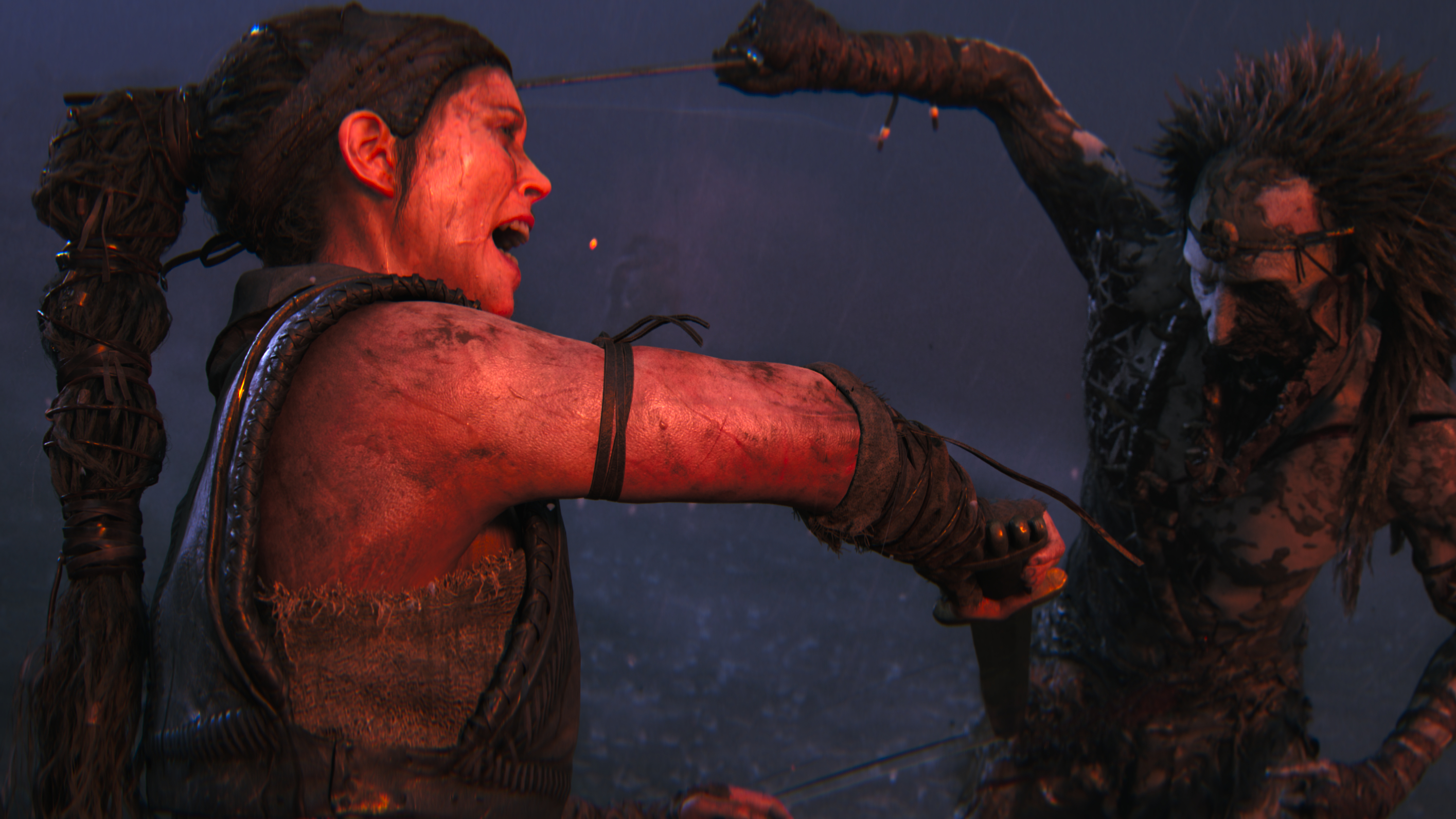
Fjord play
Combat is markedly improved from the first game - though remains a close relative. Senua’s moves and strikes are much slicker than in the first game, and each hit feels weighty and brutal. New graphic and bloody finisher animations emphasize this further, with each killing blow traveling from Senua’s hands to yours.
Timing is crucial and is the point at which you’ll find the most risk and satisfaction. One well-timed heavy strike can break an enemy's guard with a ringing clang, while one poorly-timed strike or dodge can leave you exposed. With the latter, enemies are quick to take advantage of such mistakes to beat you down. This is where the combat can feel hard, heavy, and brutal - even if you never really feel in danger of ever dying.
The tools available to Senua are stripped back with only a light and heavy attack, a dodge, a block, and her focus ability (which slows down time) available to utilize. While I can recognize that the game is gunning for a more cinematic experience, enlivening combat with some more moves or weapons would have helped spice things up on a moment-to-moment level.
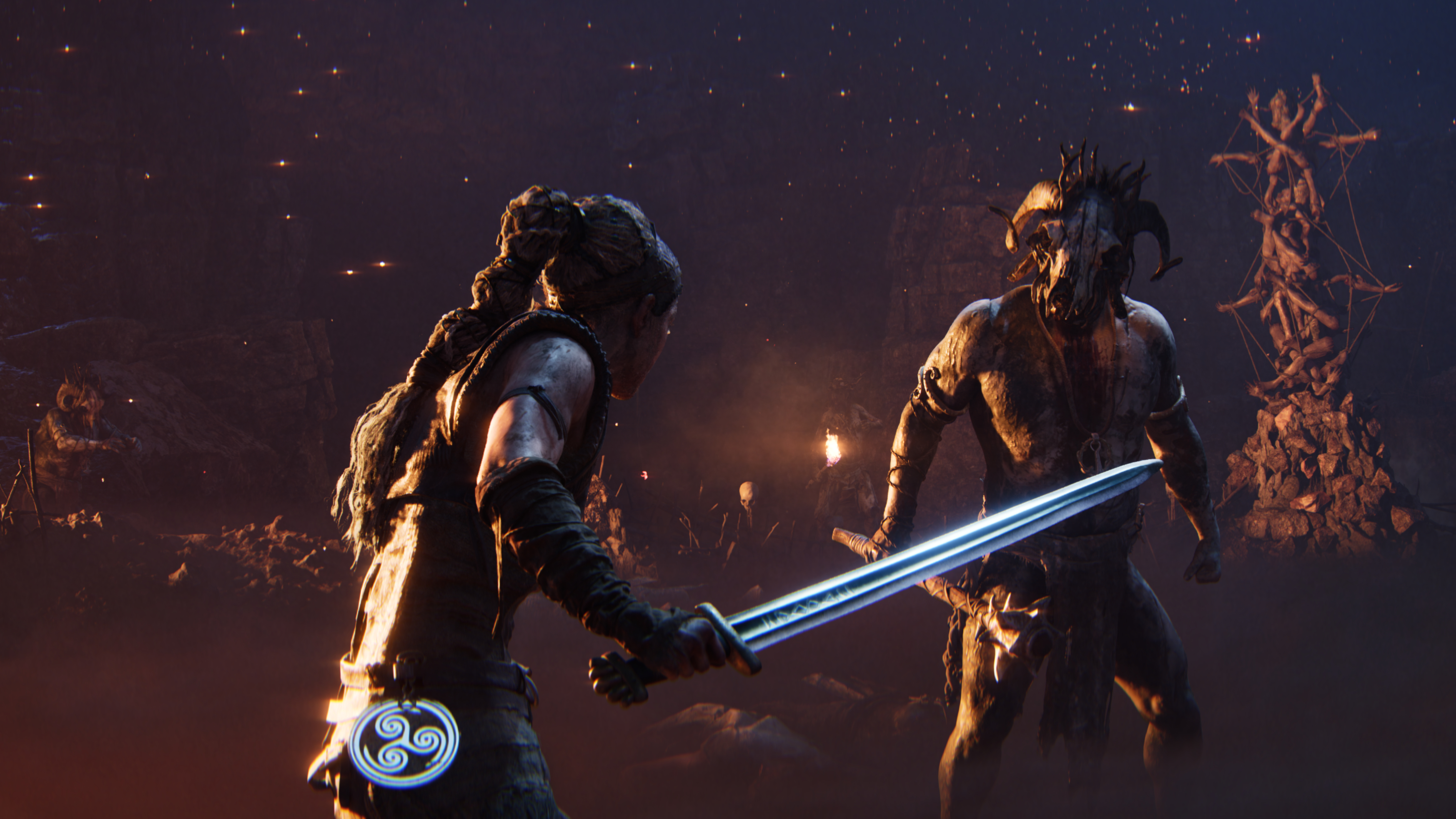
Imperfect ripples
For all it does expertly and impactfully, however, there are chinks in the leather armor of Senua’s Saga: Hellblade 2. For example, that excellent and detailed audio design can often go too far. In some darker environments, it appeared that some ‘scary-sounding’ noises were added to an already-tense environment too heavy-handedly for the sake of it. Elsewhere, the Furies that reside in Senua’s head can offer too much chatter, strange commentary that doesn’t match the action, or over-explain things repetitively. In these instances, letting some silence do the talking could have worked wonders.
It swings the other way at points, however, when some long walks through the Icelandic landscapes become far too long and empty. These can drag on, making for some uneven pacing at points, especially when all you’re doing is pushing forward on the left stick.
Combat is lean to a fault too; mainly because it becomes repetitive. You only ever fight enemies one-on-one, and once you learn the different enemies’ movesets, you’ve basically seen all the combat on offer. However, this is slightly offset by the gruesome and slick animations and finishers.
Minor grumbles aside, every single one of Senua’s Saga: Hellblade 2’s elements, be they design features and details, puzzle nuances, or gameplay mechanics, combine to create an experience that is far greater than the sum of those parts.
It is such a well-designed, well-polished, and well-crafted game that it’s a clear demonstration of video games being the art form they can be. Senua’s Saga: Hellblade 2 might not take you a long time to finish - but it will leave an indelible mark on you.
Accessibility
There are a number of accessibility features in Senua's Saga: Hellblade 2. Graphically, there are motion blur adjustments to be had, as well as three color blind modes on offer: Deuteranope, Protanope, and Tritanope. On the audio front, there are menu narration settings to tinker with, adjustments to be made on the SFX mix, and you can change subtitles’ display settings while making adjustments to text size, some animations, and UI color schemes.
You can also change bits in the game’s action such as initiate self-play for offensive and/or defensive combat actions (where the game takes control of fights for you, removing any difficulty), customize your inputs, and adjust the camera bob settings.
Should I play Senua's Saga: Hellblade 2?
Play it if...
You want to play a gripping game full of immersive detail
The game’s focus on mental health, combined with its intense performances, atmospheric location, and immersive cinematic setting meant this game offers a unique experience.
You want the highest quality audio-visual experience
The audio design and photorealistic art style of Senua’s Saga: Hellblade 2 is of an incredibly high -standard; one of the highest I’ve ever seen. If accuracy and realism in visuals, and multi-faceted, brilliant binaural audio design is what intrigues you, then the game will not disappoint.
Don't play it if...
You’re after a chilled and relaxed game
Senua's Saga: Hellblade 2 is not for the faint-hearted. It wears its heavy, bleak, and harrowing themes on its sleeve, and offers a very particular kind of intense experience about darkness, the human psyche and mental health, and tales of sadness.
You enjoy multi-faceted combat
Senua only has four moves when it comes to combat in the game, and while the animations are slick and brutal, it reveals itself as very simple early on and becomes repetitive.
How I reviewed Senua's Saga: Hellblade 2
I played Senua's Saga: Hellblade 2 for about nine hours, finishing its main story as well as exploring as many nooks and crannies of the game world as I could. I played the game on Xbox Series X on a Samsung Q6F 4K QLED TV, with my Thrustmaster eSwap X 2 controller and SteelSeries Arctis Nova 5 headset. While Ninja Theory advises to play with a headset or headphones, I found that the game’s audio does perform nicely on a soundbar.
Revisiting the first Hellblade game to completion in the past few weeks also gave me a great reference point for this sequel, enabling me to appreciate and interrogate the second game and where it differed or advanced from its predecessor.
First reviewed May 2024.

Rob is the Managing Editor of TechRadar Gaming, a video games journalist, critic, editor, and writer, and has years of experience gained from multiple publications. Prior to being TechRadar Gaming's Managing Editor, he was TRG's Deputy Editor, and a longstanding member of GamesRadar+, being the Commissioning Editor for Hardware there for years, while also squeezing in a short stint as Gaming Editor at WePC just before joining TechRadar Gaming. He is also a writer on tech, gaming hardware, and video games but also gardens and landscapes, and has written about the virtual landscapes of games for years.
